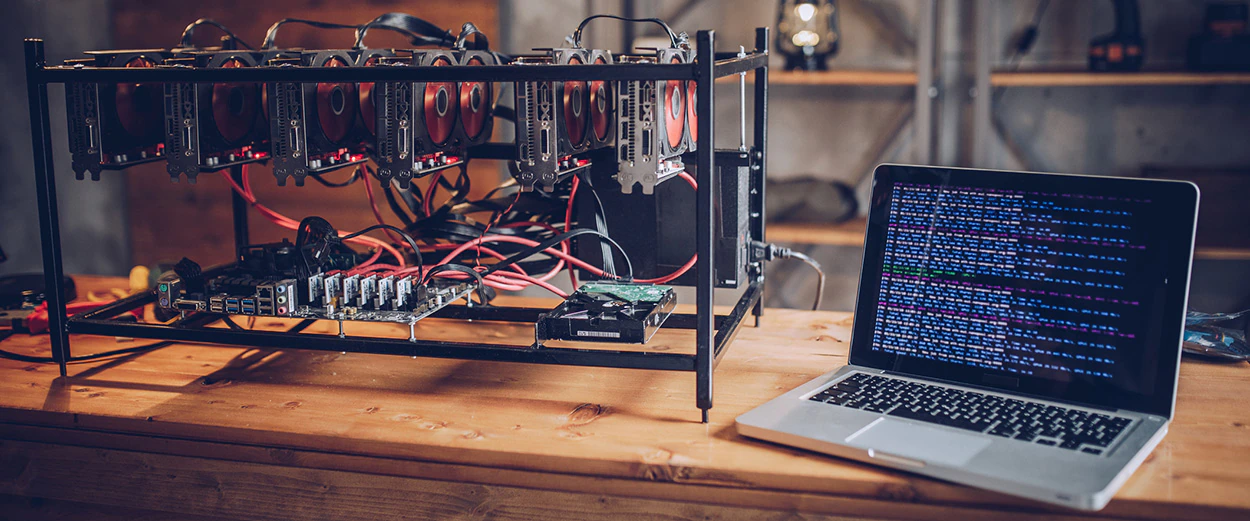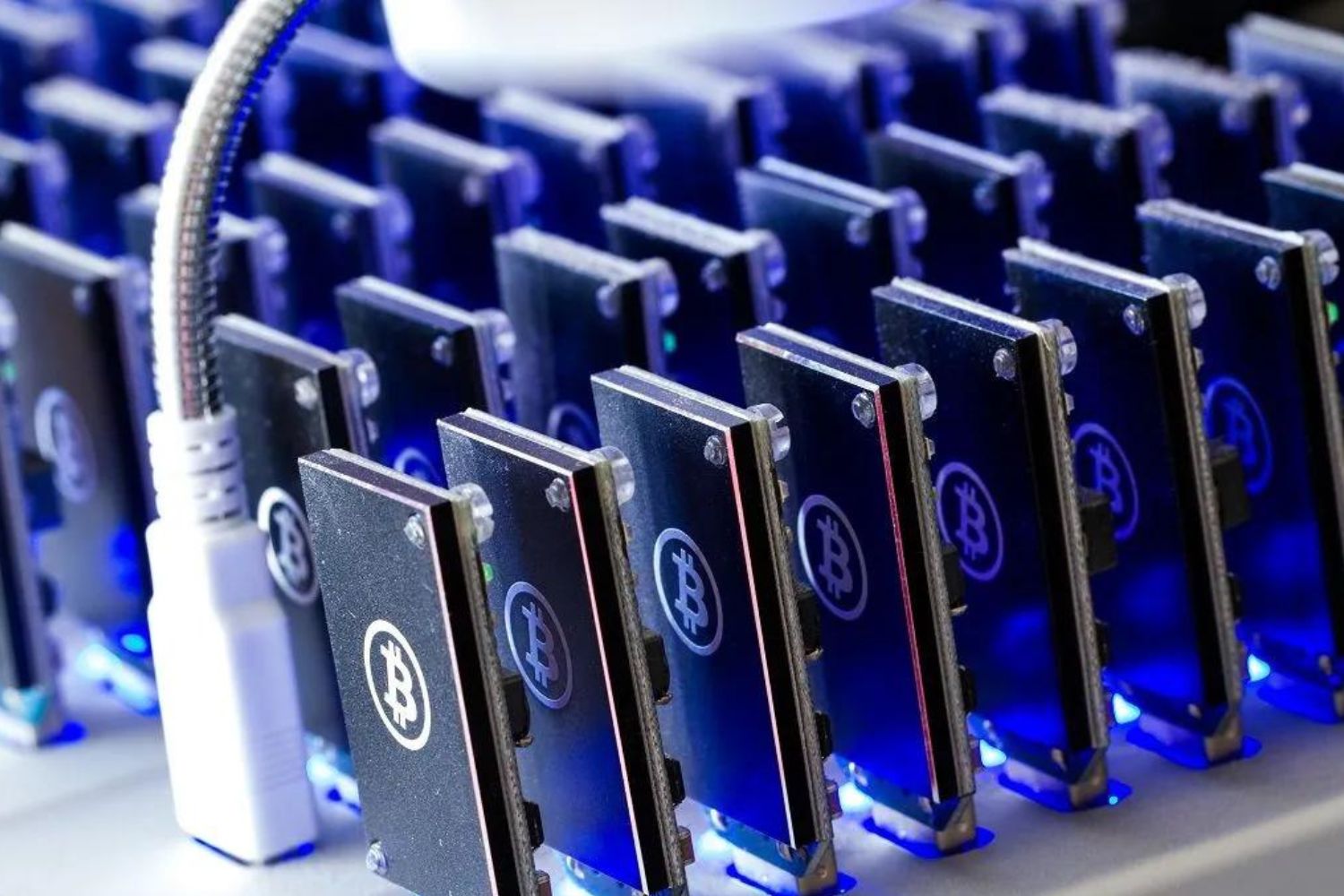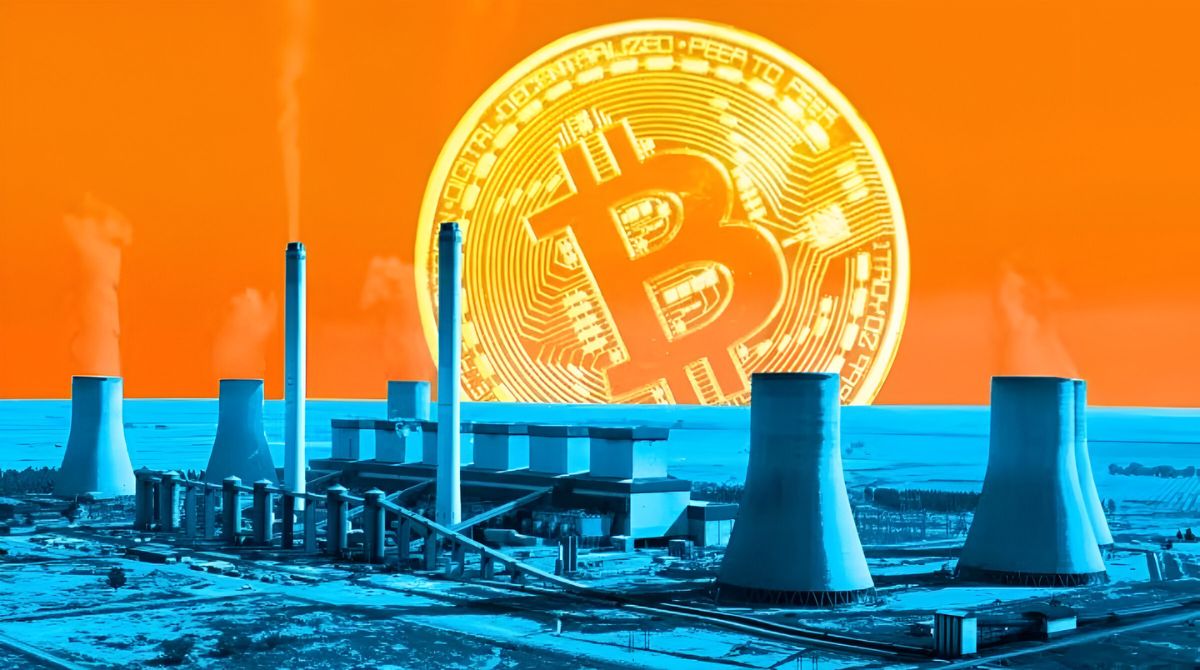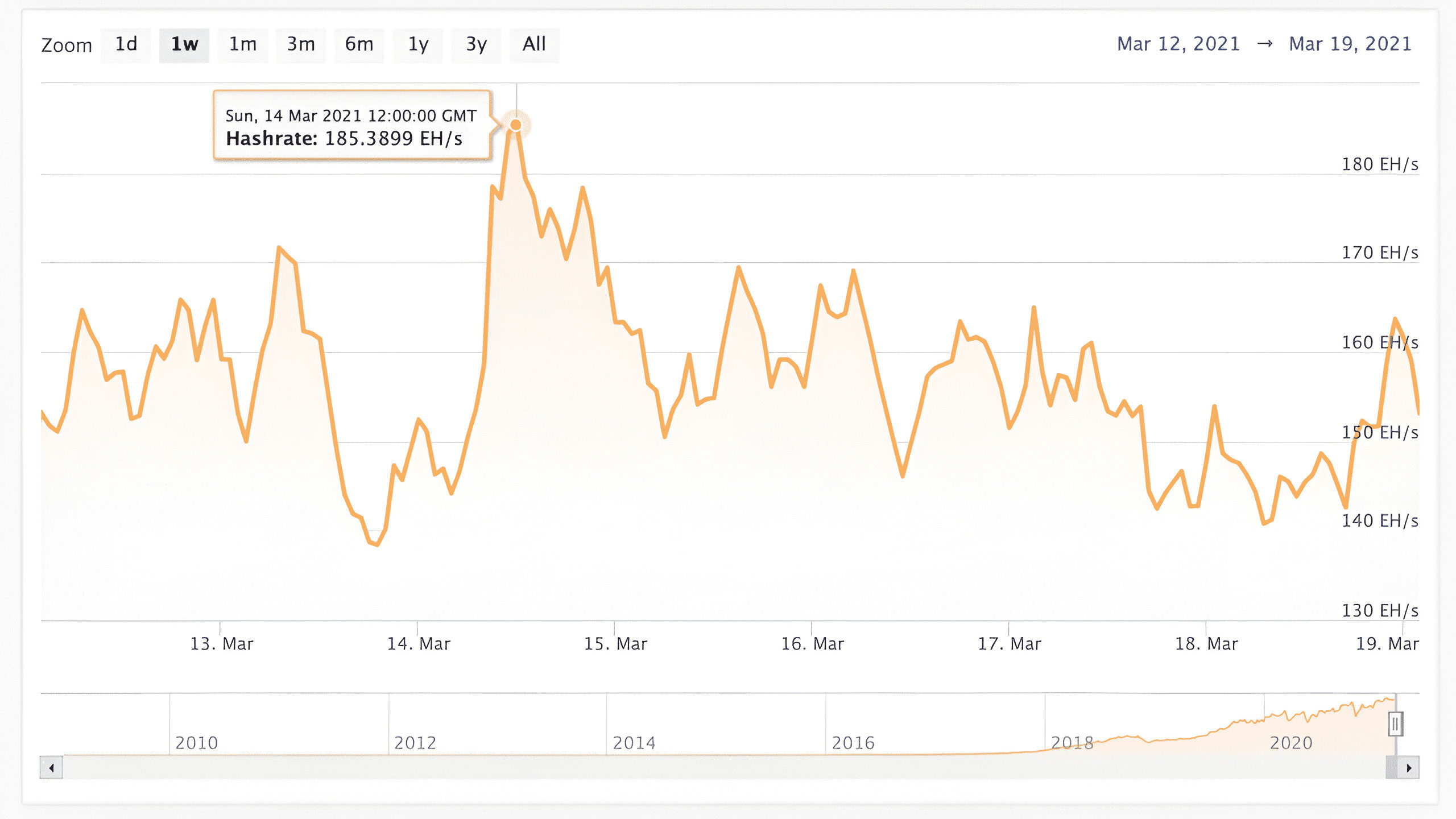Introduction
Bitcoin, the world’s first decentralized digital currency, has been making waves in the financial world since its inception in 2009. With its rising popularity and widespread adoption, many people are curious about various aspects of Bitcoin, including its mining process and when it will be completely mined out.
Bitcoin, often referred to as “digital gold,” operates on a decentralized network known as blockchain. Unlike traditional currencies issued by central banks, Bitcoin is created through a process called mining, which involves solving complex mathematical problems to validate and secure transactions.
The concept of mining in the context of Bitcoin may sound similar to traditional mining activities, but the process itself is different. Rather than extracting physical resources from the ground, Bitcoin mining involves utilizing powerful computers to solve algorithms and earn newly minted Bitcoins as a reward.
The mining process serves two crucial purposes: validating transactions and minting new Bitcoin. Miners verify each transaction and add it to a block on the blockchain, ensuring the integrity and immutability of the digital ledger. In return for their efforts, miners are rewarded with a certain amount of Bitcoin.
At present, the mining process requires significant computational power, demanding specialized hardware and consuming a substantial amount of electricity. As a result, Bitcoin mining has become increasingly competitive and resource-intensive, with miners constantly seeking more efficient ways to maximize their profits.
Since its inception, Bitcoin mining has undergone several significant changes. One important factor to consider is the halving events that occur approximately every four years. During these events, the number of new Bitcoins produced as mining rewards is cut in half. This process is built into Bitcoin’s protocol and is designed to control the inflation rate and ensure scarcity, similar to how precious metals like gold are limited in supply.
What is Bitcoin?
Bitcoin, created by an anonymous individual or group of individuals using the pseudonym Satoshi Nakamoto, is a digital currency that operates on a decentralized network known as blockchain. Unlike traditional currencies issued by central banks, Bitcoin is not controlled by any government or financial institution.
Bitcoin offers a new way to conduct transactions and store value securely and privately. It eliminates the need for intermediaries, such as banks, by allowing peer-to-peer transactions directly between users. Transactions are verified by network nodes through cryptography and recorded on the blockchain, a public, distributed ledger that ensures transparency and immutability.
One of the key features of Bitcoin is its limited supply. The total number of Bitcoins that can ever exist is set at 21 million. This scarcity contributes to Bitcoin’s value proposition, as it is seen as a store of value similar to gold.
Bitcoin can be divided into smaller units called Satoshis, named after the creator. One Bitcoin is equivalent to 100 million Satoshis, allowing for microtransactions and increased liquidity.
Another important aspect of Bitcoin is its decentralization. The network is spread across thousands of computers, called nodes, around the world. These nodes maintain the integrity of the blockchain by validating transactions and securing the network through a consensus mechanism known as proof-of-work.
Bitcoin transactions offer a high level of privacy, as only the public addresses associated with the transactions are visible on the blockchain. However, it’s worth noting that the transactions themselves are not completely anonymous, as they can be traced back to the origin and destination if enough information is revealed.
Bitcoin has gained attention as a revolutionary form of digital currency, attracting both investors looking for financial opportunities and individuals seeking an alternative to traditional banking systems. Its decentralized nature, limited supply, and potential for growth have fueled its popularity and widespread use.
How does Bitcoin mining work?
Bitcoin mining is the process by which new Bitcoins are created and transactions are verified on the blockchain. It is a vital component of the Bitcoin network, ensuring its security and integrity.
Bitcoin mining involves using powerful computers to solve complex mathematical problems. These problems are cryptographic puzzles that require significant computational power to solve. Miners compete with each other to find the solution to these puzzles, and the first miner to find the correct solution is rewarded with a certain amount of newly generated Bitcoins.
The mining process is based on a consensus mechanism called proof-of-work. Miners need to show that they have expended computational effort to solve the puzzle, which is time-consuming and energy-intensive. This computational effort is what creates the security for the Bitcoin network.
When a miner successfully solves a puzzle, they add a new block to the blockchain. Each block contains a list of recently validated Bitcoin transactions. The block also contains a reference to the previous block, forming a chain-like structure. This chain of blocks is what gives Bitcoin its name, as it represents a digital ledger of transactions.
In addition to validating transactions and adding them to the blockchain, miners also ensure the integrity of the network. They prevent double-spending by confirming that the same Bitcoin is not being spent more than once. They also verify that the transactions adhere to the rules of the Bitcoin protocol.
To participate in Bitcoin mining, miners need specialized hardware known as ASICs (Application-Specific Integrated Circuits). These devices are designed specifically for the purpose of mining and offer significantly higher computational power compared to standard computer equipment.
Bitcoin mining also requires a significant amount of electricity. This is because the computational power required to mine Bitcoins is immense, and miners need to continuously operate their equipment to solve the mathematical puzzles. As a result, mining operations are often located in regions with access to cheap and abundant electricity.
As the Bitcoin network grows in size and complexity, mining becomes more challenging. The difficulty of the puzzles adjusts regularly to ensure that new blocks are added to the blockchain approximately every ten minutes. This adjustment helps to maintain a stable rate of new Bitcoin creation over time.
Overall, Bitcoin mining is a crucial process that ensures the security and functionality of the Bitcoin network. It provides the incentive for miners to contribute computational power and maintain the integrity of the blockchain.
The current state of Bitcoin mining
Bitcoin mining has evolved significantly since the early days of the cryptocurrency. The current state of Bitcoin mining is characterized by intense competition, specialized hardware, and increasing energy consumption.
As the price of Bitcoin has risen over the years, so has the interest in mining it. Miners from around the world compete to solve the mathematical puzzles and earn newly minted Bitcoins as a reward. This competition has led to the development of specialized mining hardware and mining pools.
Today, Bitcoin mining is dominated by large mining farms and mining pools. These facilities are equipped with powerful ASIC miners that provide a significant computational advantage over individual miners. By joining mining pools, miners can combine their resources and increase their chances of successfully mining a block.
Bitcoin mining is an energy-intensive process. The computational power required to solve the mathematical puzzles consumes a large amount of electricity. As a result, the carbon footprint of Bitcoin mining has attracted criticism from environmentalists.
China has been a major player in Bitcoin mining, accounting for a significant portion of the global mining power. However, the Chinese government has recently cracked down on mining operations due to concerns over energy consumption and financial risks. As a result, many miners have migrated to other countries with more favorable regulatory environments.
Another aspect of the current state of Bitcoin mining is the block reward halving events. Approximately every four years, the number of new Bitcoins generated as mining rewards is halved. This event is built into the Bitcoin protocol and is designed to control the inflation rate and ensure scarcity. The most recent halving occurred in May 2020, reducing the block reward from 12.5 to 6.25 Bitcoins.
The halving events have a significant impact on the economics of mining. With the reduction in block rewards, miners need to adjust their operations to maintain profitability. Some miners may become unprofitable and shut down their mining rigs if the cost of electricity and equipment maintenance outweighs the value of the newly generated Bitcoins.
Despite the challenges and competition, Bitcoin mining continues to be a profitable venture for many. The potential for financial rewards and the allure of being part of the decentralized Bitcoin network attract individuals and businesses to engage in mining activities.
Looking ahead, the future of Bitcoin mining is likely to be influenced by advancements in technology, regulatory developments, and the overall adoption and acceptance of Bitcoin as a mainstream form of currency. As the cryptocurrency landscape evolves, so will the state of Bitcoin mining.
The halving events
One of the key features of Bitcoin is the occurrence of halving events, which have a significant impact on the supply and mining of this digital currency. Halving events are pre-programmed into the Bitcoin protocol and occur approximately every four years, reducing the mining reward by half.
When Bitcoin was first introduced in 2009, the mining reward was set at 50 Bitcoins per block. In 2012, the first halving event took place, reducing the reward to 25 Bitcoins per block. The second halving occurred in 2016, further reducing the reward to 12.5 Bitcoins per block. The most recent halving event happened in May 2020, reducing the reward to 6.25 Bitcoins per block.
The purpose of the halving events is to control the inflation rate of Bitcoin and ensure its scarcity, similar to how precious metals like gold are limited in supply. By progressively reducing the block reward, the supply of new Bitcoins entering circulation slows down. This mechanism creates a deflationary effect, increasing the scarcity of Bitcoin over time.
Halving events have significant implications for Bitcoin miners. With each halving, miners receive fewer newly minted Bitcoins as a reward for their mining efforts. This reduction in the block reward affects the profitability of mining operations, as the cost of electricity and equipment maintenance remains relatively constant.
Miners must adapt to the reduced block rewards to maintain profitability. Some miners may need to upgrade their mining hardware to increase computational power, while others may need to relocate to regions with cheaper electricity costs. These adjustments are necessary to offset the lower mining rewards and ensure the viability of Bitcoin mining operations.
Halving events also have an impact on the price of Bitcoin. Historically, the price of Bitcoin has experienced significant volatility before and after halving events. This volatility is often attributed to the anticipation of reduced supply and increased scarcity. As the supply of newly minted Bitcoins decreases and demand continues to grow, the price of Bitcoin has tended to rise over the long term.
The halving events serve as important milestones in the Bitcoin ecosystem, representing significant shifts in mining economics and the supply dynamics of this digital currency. They have become highly anticipated events within the Bitcoin community and are closely monitored by traders, investors, and enthusiasts alike.
As the number of Bitcoins approaches its finite limit of 21 million, the interval between halving events will increase. Eventually, around the year 2140, the last Bitcoin will be mined, marking the end of the era of new Bitcoin creation through mining.
When will all Bitcoin be mined out?
The total supply of Bitcoin is set at 21 million coins, and the process of mining is gradually bringing this digital currency into circulation. However, determining the exact timeline for when all Bitcoin will be mined out is not a straightforward task.
As of now, over 18.8 million Bitcoins have been mined, leaving approximately 2.2 million to be released into the market. The rate at which new Bitcoins are mined decreases over time due to the halving events discussed earlier.
Based on the current rate of block mining, it is estimated that the last Bitcoin will be mined somewhere around the year 2140. This projection takes into account the average time it takes to mine a block, which is approximately 10 minutes, and the block reward reduction that occurs with each halving event.
The halving events have a significant impact on the pace at which new Bitcoins are generated. With each halving, the block reward is cut in half, reducing the number of newly minted Bitcoins that are added to the supply. This gradual decrease in rewards ensures a controlled and predictable issuance rate, making Bitcoin a deflationary currency.
By the time the last Bitcoin is mined, the block reward will have diminished to a negligible amount. Miners will primarily earn transaction fees as an incentive for securing the network and processing transactions.
It’s worth noting that the exact year when the last Bitcoin will be mined is an estimate based on current mining conditions and the protocol rules. External factors, such as technological advancements, changes in mining difficulty, regulatory developments, and shifts in the global cryptocurrency landscape, can influence the trajectory and timing of the mining process.
Despite the gradual reduction in the rate of new Bitcoin creation, the mining process will continue to play a crucial role in securing the network and facilitating transaction validation. Miners will still be essential for processing transactions, maintaining the integrity of the blockchain, and ensuring the overall functionality of the Bitcoin ecosystem.
As the mining process approaches its endpoint, the dynamics of the Bitcoin ecosystem will likely shift. The focus will shift more towards transaction validation and fee collection, and the reliance on mining as a source of new Bitcoin supply will diminish.
The prospect of all Bitcoin being mined out adds to the uniqueness and scarcity of the digital currency. It emphasizes the finite nature of Bitcoin and positions it as a limited asset in the world of finance and investment.
The significance of the last Bitcoin being mined
The mining of the last Bitcoin is a significant event that holds both symbolic and practical implications for the Bitcoin ecosystem and the broader cryptocurrency community.
From a symbolic standpoint, the mining of the last Bitcoin signifies the completion of the initial coin supply and the fulfillment of Satoshi Nakamoto’s vision. It represents the culmination of the decentralized network’s journey, which began with the mining of the first Bitcoin block, known as the Genesis Block, back in 2009.
Furthermore, the mining of the last Bitcoin highlights the scarcity of this digital asset. With a maximum supply limit of 21 million coins, Bitcoin stands out as a finite resource in a world where fiat currencies can be printed at will. This scarcity contributes to Bitcoin’s value proposition and positions it as a potential store of value comparable to gold.
The event also marks a transition in the incentive structure for miners. As the block reward diminishes to negligible levels, miners will rely heavily on transaction fees to sustain their operations. This shift emphasizes the importance of a healthy and robust transaction market within the Bitcoin network.
Practically speaking, the mining of the last Bitcoin brings about changes in the mining landscape. With the main incentive for mining being transaction fees, miners will have to adapt their strategies and focus on optimizing their operations for profitability. This shift in incentives may lead to increased competition among miners and innovations aimed at reducing costs and improving efficiency.
Moreover, the mining of the last Bitcoin sheds light on the long-term viability and sustainability of the Bitcoin network. With no new supply of Bitcoins being generated through mining, the value of the digital currency will be driven by factors such as demand, adoption, and utility. It will also showcase the network’s ability to function and incentivize miners solely through transaction fees.
Additionally, the event may trigger a reflection on the environmental impact of Bitcoin mining. As the mining process consumes significant amounts of energy, the reduction in new coin issuance could alleviate some concerns surrounding the carbon footprint associated with mining. Miners and the broader community may be motivated to explore more eco-friendly mining practices and renewable energy sources.
Overall, the mining of the last Bitcoin carries both symbolic and practical significance. It represents the completion of the initial coin supply, emphasizes the scarcity of Bitcoin, and prompts shifts in the incentive structure for miners. It also highlights the long-term sustainability of the Bitcoin network and may spur innovations in mining practices and environmental sustainability.
What happens after all Bitcoin is mined out?
After all 21 million Bitcoins are mined, the mining process will no longer generate new coins. This event raises questions about the future of the Bitcoin network and the incentives for miners. Here are some potential scenarios that may unfold:
Transition to transaction fee-based rewards: With no new Bitcoins being created, miners will primarily rely on transaction fees as their main source of income. Transaction fees will become even more crucial and will play a central role in incentivizing miners to continue securing the network and processing transactions.
Increased transaction fees: As miners become more reliant on transaction fees, the competition for including transactions in blocks may intensify. This could lead to an increase in transaction fees as users compete for limited block space, especially during periods of high network congestion.
Market-driven transaction fee dynamics: With the transition to transaction fee-based rewards, the market will determine the appropriate fee levels. Miners will have to adjust their strategies to balance competitive pricing with attracting sufficient transaction volume to sustain their operations.
Improved scalability solutions: As the importance of transaction fees grows, there may be increased focus on scaling solutions to accommodate a higher volume of transactions. This could spur further development of technologies such as the Lightning Network, which aims to enable faster and cheaper off-chain transactions.
Shift in mining incentives: With no new Bitcoins to mine, miners may need to reassess their business models and strategies. Some may shift their focus to providing services or solutions for the Bitcoin ecosystem, such as running mining pools, offering hosting services, or developing mining hardware.
Price impact: The finite supply of Bitcoin, combined with the increasing demand and adoption, has the potential to impact the price of Bitcoin. As scarcity becomes more evident, market dynamics could drive the price of Bitcoin upward, making it a sought-after digital asset.
Evolving regulatory and environmental considerations: The maturity of the Bitcoin ecosystem may lead to increased regulatory oversight and environmental concerns. Efforts to ensure the responsible use of Bitcoin mining resources and address the sustainability of mining operations may gain more prominence.
Continued innovation and competition: The completion of mining does not mean the end of innovation within the Bitcoin network. Developers and entrepreneurs will continue to explore new use cases, applications, and improvements to enhance the functionality and adoption of Bitcoin.
While the exact ramifications of all Bitcoin being mined are uncertain, it is clear that the network will need to adapt to the new dynamics and explore innovative solutions to ensure its long-term viability. The transition to a fee-based model and the evolution of mining incentives will be key factors in shaping the future of the Bitcoin ecosystem beyond the mining phase.
Conclusion
Bitcoin mining is an integral part of the Bitcoin network, responsible for validating transactions and minting new Bitcoins. As the world’s first decentralized digital currency, Bitcoin has gained significant attention and popularity over the years.
The mining process operates on a cryptographic proof-of-work mechanism, where miners compete to solve complex mathematical puzzles and earn Bitcoin rewards. Mining has evolved over time, with specialized hardware and large-scale mining farms dominating the industry.
The occurrence of halving events every four years reduces the block reward and controls the rate at which new Bitcoin is produced. This scarcity and controlled issuance contribute to Bitcoin’s value proposition as a finite digital asset.
Looking ahead, the mining landscape will continue to transform as the last Bitcoin is mined in the future. Miners will rely increasingly on transaction fees, and the market dynamics surrounding fees will become crucial for sustaining mining operations.
After all 21 million Bitcoins are mined, the Bitcoin network will rely on transaction fees and market-driven incentives. This transition may lead to increased competition, scalability solutions, and innovative mining strategies.
The completion of mining does not signify the end of Bitcoin’s journey. The network will need to adapt, addressing regulatory, environmental, and scalability challenges while continuing to foster innovation and adoption.
Bitcoin’s significance extends beyond its mining process. It represents a decentralized digital currency that has the potential to reshape traditional financial systems and offer an alternative form of value storage.
As the Bitcoin ecosystem continues to evolve and mature, it is essential to keep a close eye on technological advancements, regulatory changes, and market dynamics. These factors will shape the future of Bitcoin mining and its broader impact on the world of finance and technology.

























